One of the most important things which thrifting has taught me is that brand and retail price are not reliable guides to quality. Designer brands sometimes offer quality that is indistinguishable from fast fashion. The quality of fast fashion itself can vary wildly. To be a savvy consumer, you have to be able to recognize quality by other means: the materials used, the construction, the finishing touches. As far as that goes, the best education is a working knowledge of how clothes are made. While I can’t help you in that department, I have a few “hacks” that I’ve developed over my years of thrifting which you may find useful.
Some of the them, unfortunately, cannot be easily explained in a blog post. Spotting good quality materials by a combination of visual identification and “hand feel” is one of the key ways that I maximize my time in thrift stores; I rarely bother looking through racks exhaustively, I just scan them for materials that stand out to the eye and the touch. I can’t tell you how to develop that skill other than by doing – touching clothes in stores, looking up the fabric content, and learning what certain materials look and feel like.
In this post, I want to talk about one of my other favourite hacks: “inspecting the guts”. Please note that I am writing this as a non-sewist , so my terminology may be off. That’s why I will be relying heavily on photos to explain what I look for; for this exercise, I will be using pieces from my own closet, representing a range of brands.
The way a piece of clothing looks on the outside can tell you some things about the way it was made and its quality. But it’s not the whole story. Flip the piece inside out, and you’ll see much more. I like to look at a few things in particular:
1) Lining
2) Seams
3) Hems
Let’s talk about each one.
Lining
Now, lining is easy. The first question is: do we have a lining? Most pieces benefit from having a lining (there are exceptions, of course) because it helps them sit better on the body, and it protects the fabric (especially delicate ones like silk) from direct contact with the body. Lining can also make the garment more comfortable – wool pants are a good example – and create some built-in climate control.
Now, there are high end designer pieces that don’t come with a lining but probably should; to me, that’s a sign of the label taking shortcuts. It doesn’t automatically disqualify the piece from purchasing consideration, but it’s something of which I take note. Although, I will say that most unlined wool pants (or skirts) are an abomination.
If there is a lining, the second question is: what kind of lining is it? Silk is nice from a comfort perspective, but it is more fragile itself. It’s also pretty rare; I tend to see it on pieces that run in the high 3 figures or over at retail. (My YSL blazer has a silk lining … and that’s about it for my closet.) Polyester, or poly blend, is more common even in designer pieces. I’ve had mixed success with this, and I haven’t been able to pinpoint why – it seems not all polyester is born equal. Some poly-lined blazers are a sweat-trap, others are not bad; poly-lined dresses are usually fine.
Lining can also be a trap with some skirts. I’ve had experiences where the lining was either poorly sewn in, poorly designed, or both, to the point of making the skirt unwearable. Depending on how the skirt is constructed, fixing a lining can be done easily and inexpensively by a tailor … or not. Again, I am not an expert, but generally it’s been my experience that if there is a zipper on the seam that has to be adjusted, that will cost more money.
Speaking of seams …
Seams and Hems
First up, let’s compare a Dries Van Noten top and a Forever 21 top. I picked these 2 because they are actually similar in the more obvious ways: both are 100% cotton, long-sleeve, unlined tops. The DVN piece is one of the brand’s more run-of-the-mill items, which is probably why it’s made in Hungary rather than Belgium like my other pieces.
Here is the inside seam on the DVN piece:
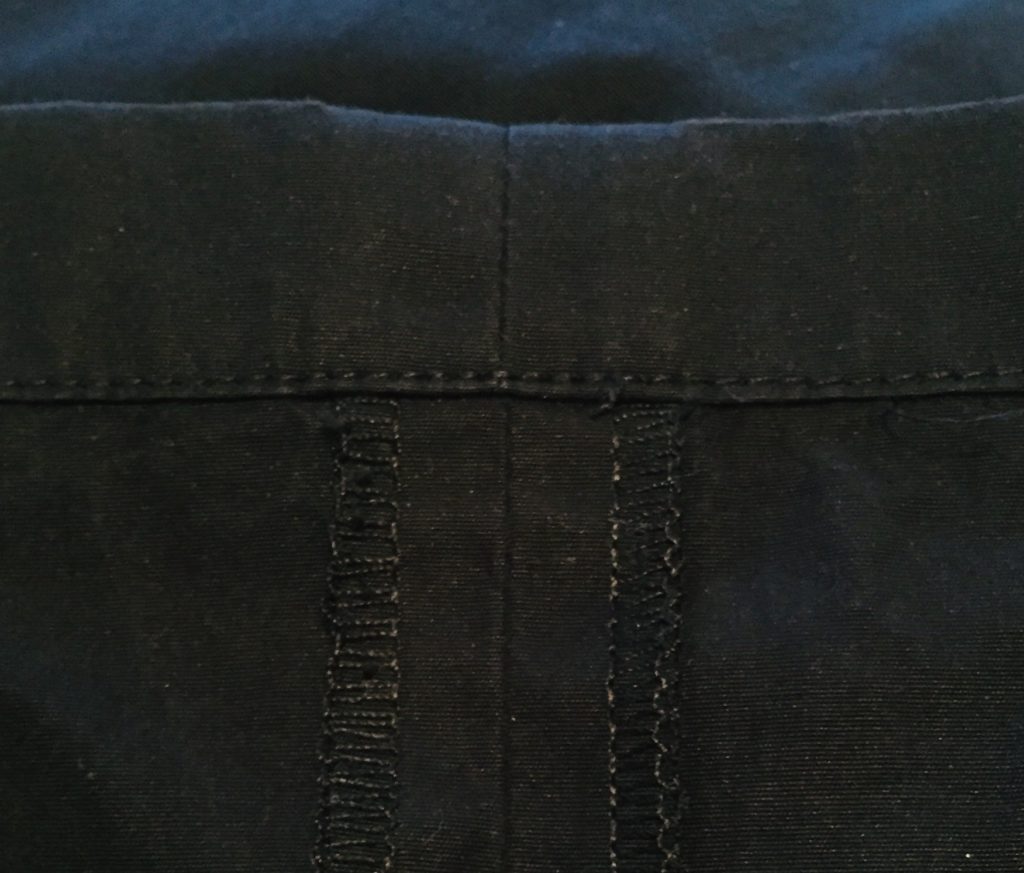
Apologies for the photo quality – it’s hard to capture details on black fabric, so I had to kick up the contrast a lot.
Here is the Forever 21 piece:
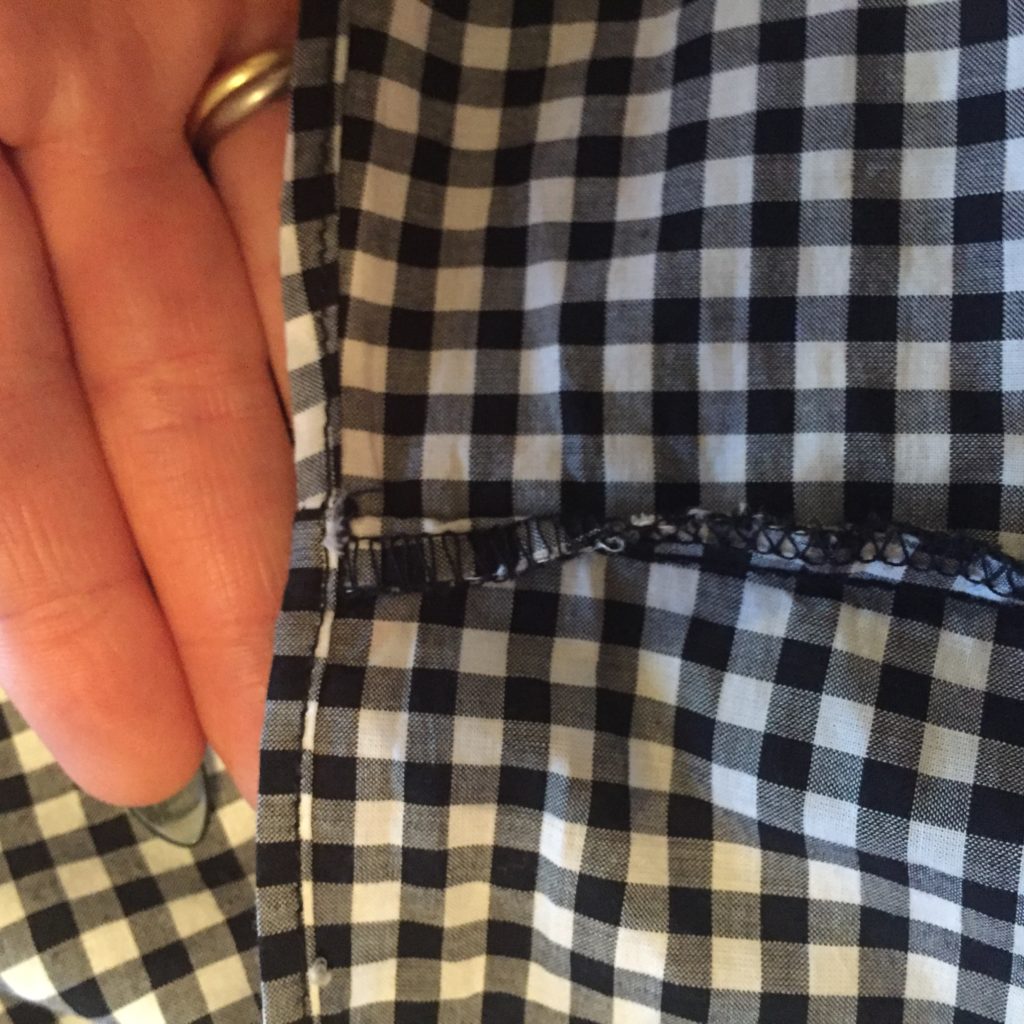
You can see that the way the seam is finished is much more basic (more likely to rip or split open) and sloppy. Same with the hem.
For further comparison, here is a Maeve top (Anthro brand). This one is 100% rayon, but otherwise similar:
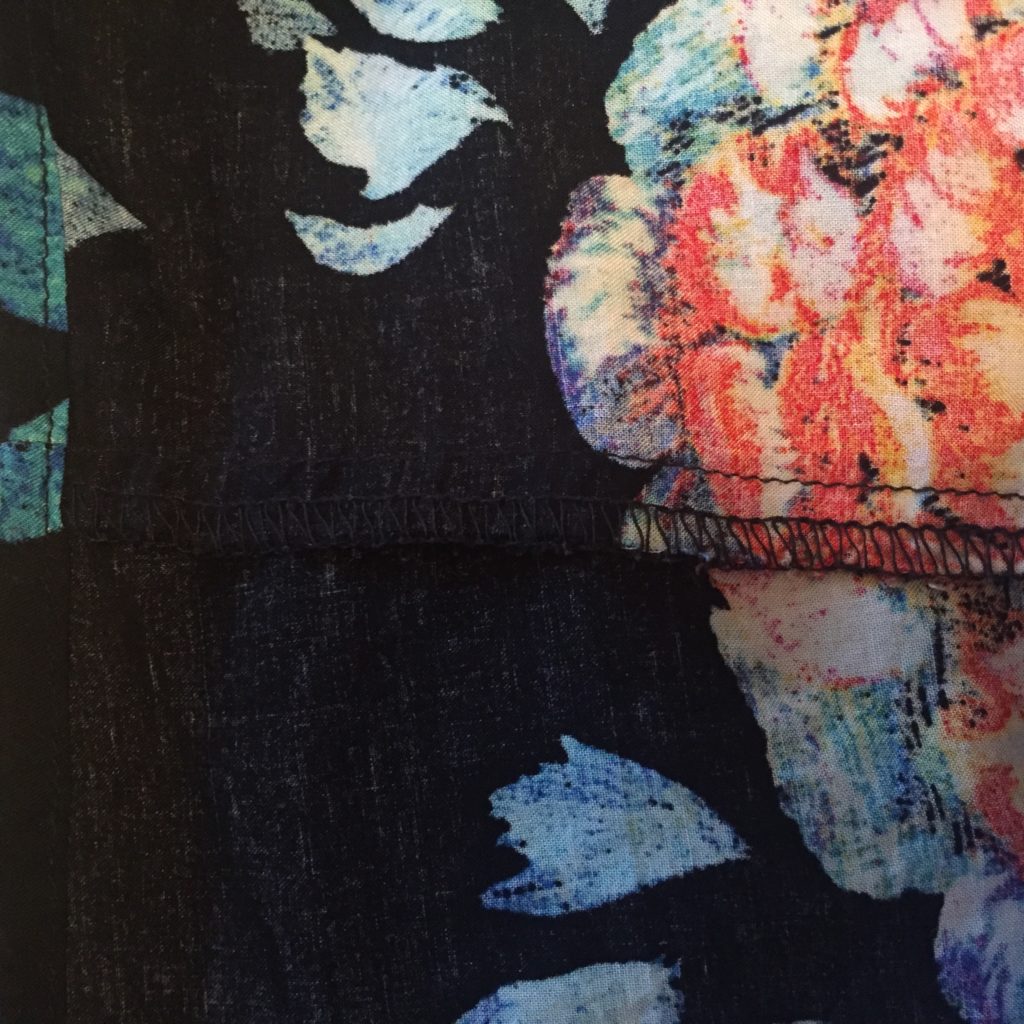
Not all that different from F21. To me, it looks like the stitching is a bit more neat, and the hem is more even, but that’s about it.
Let’s look at skirts. First up, a Suno skirt. I had never heard of this brand before I found this skirt at VV, but I knew it was quality without having to look it up. Here’s the seam:
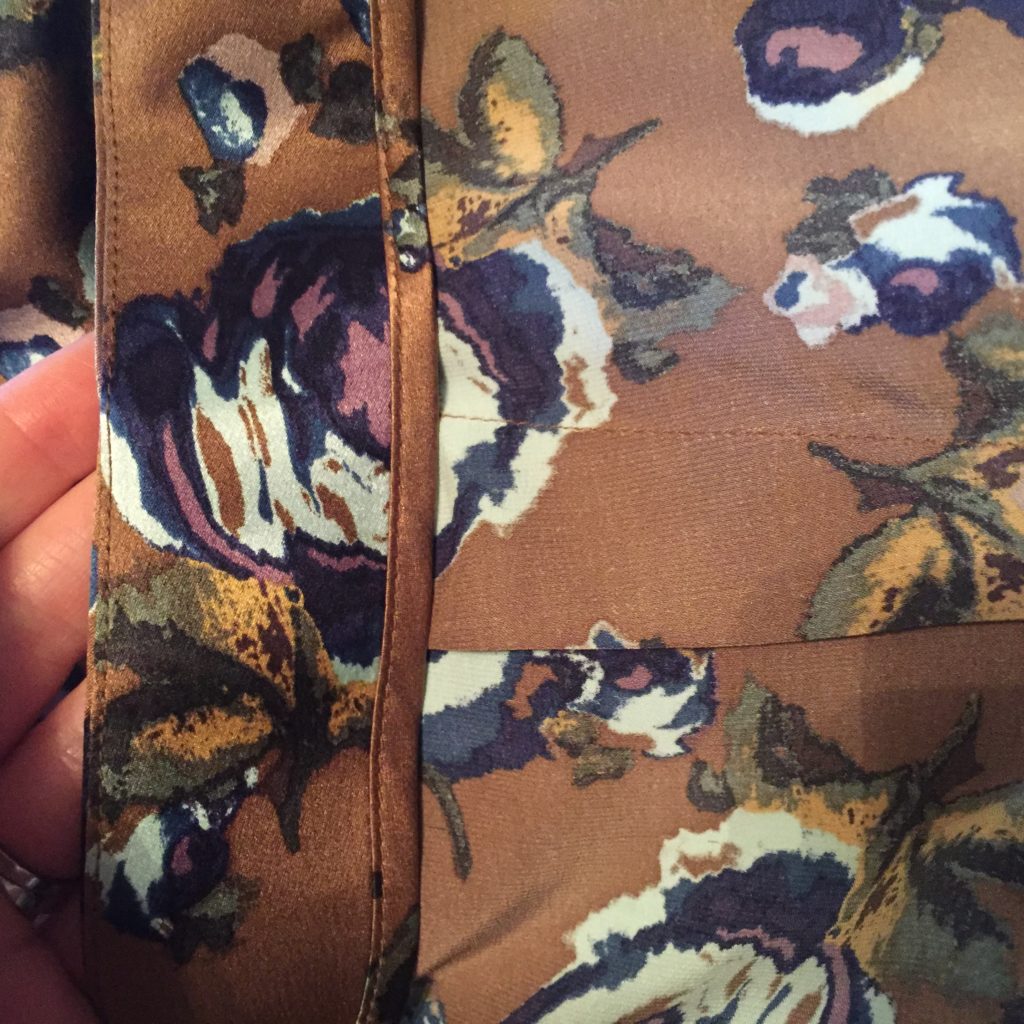
I don’t know the correct term for this type of seam (and that hem!!!) but it looks like it would be (a) time consuming, and (b) more expensive. Why?
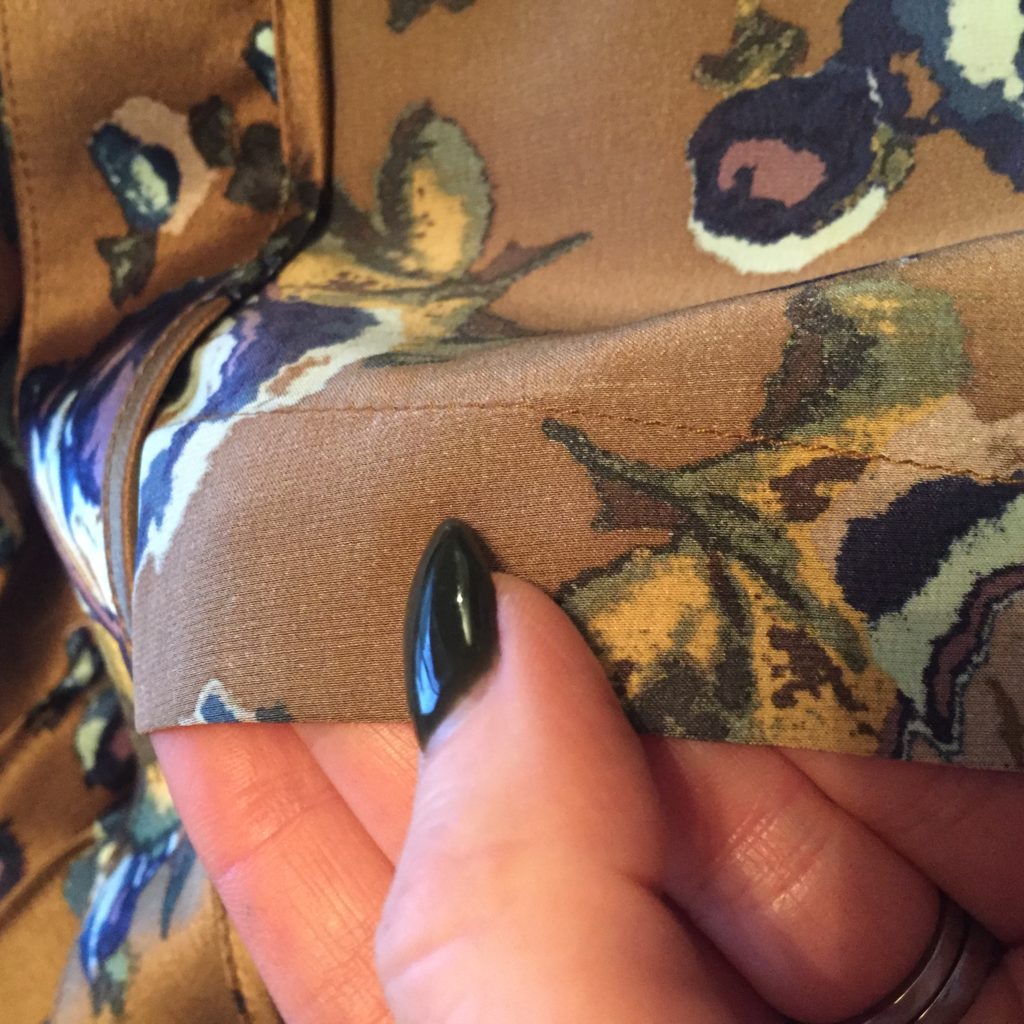
See this part where my finger is? That “flap” is actually material folded on itself. So that’s an extra 3-4 inches of material that isn’t visible – but will add up, cost wise, over a whole production run. The benefit of the extra material to you as consumer? If you need to let out the skirt (i.e. take it up to a larger size), it can be done.
Compare with this satin-like polyester skirt from Nordstrom Rack:
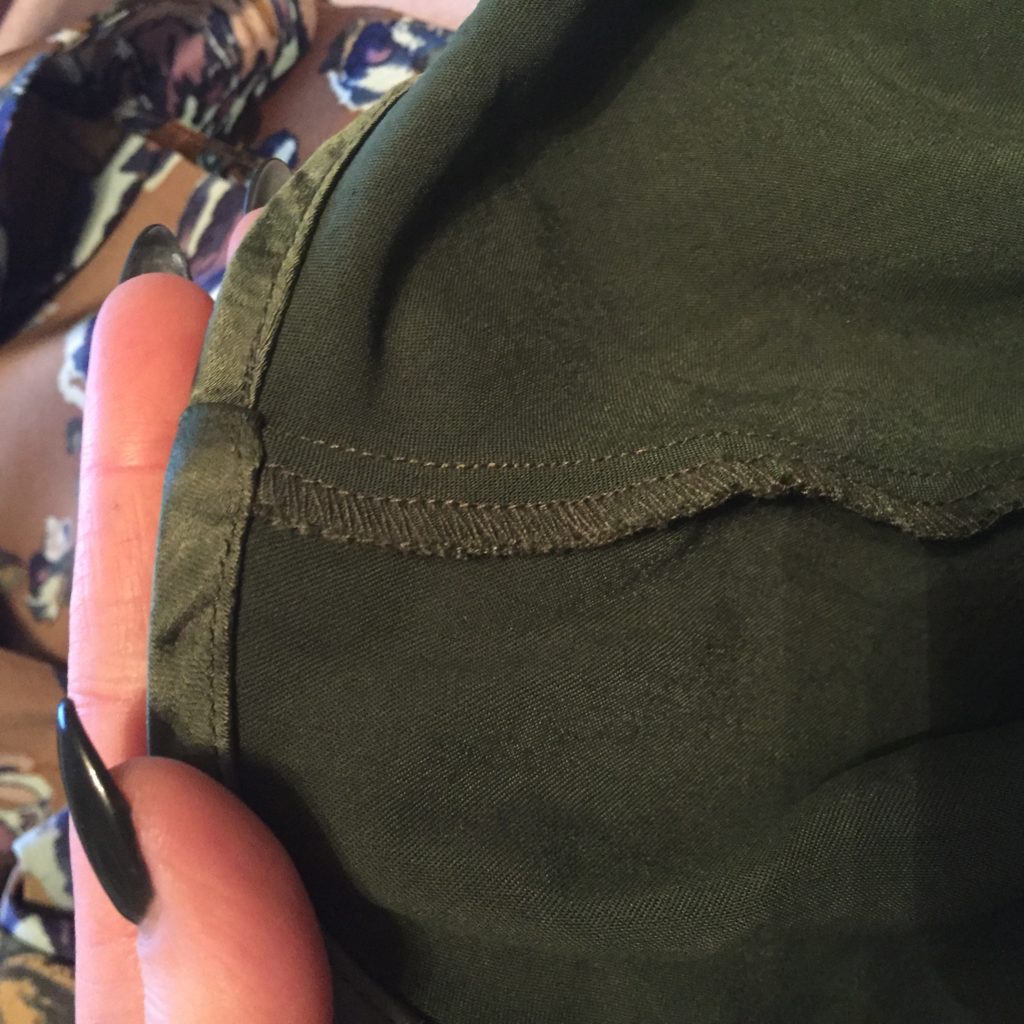
There is no extra material here – if I gain any weight, goodbye skirt. Also, the seam doesn’t sit flat which makes for a sloppier fit (puckering where my body curves, i.e. the hips).
One more skirt comp: AllSaints (real) leather mini skirt versus Zara (faux) leather skirt.
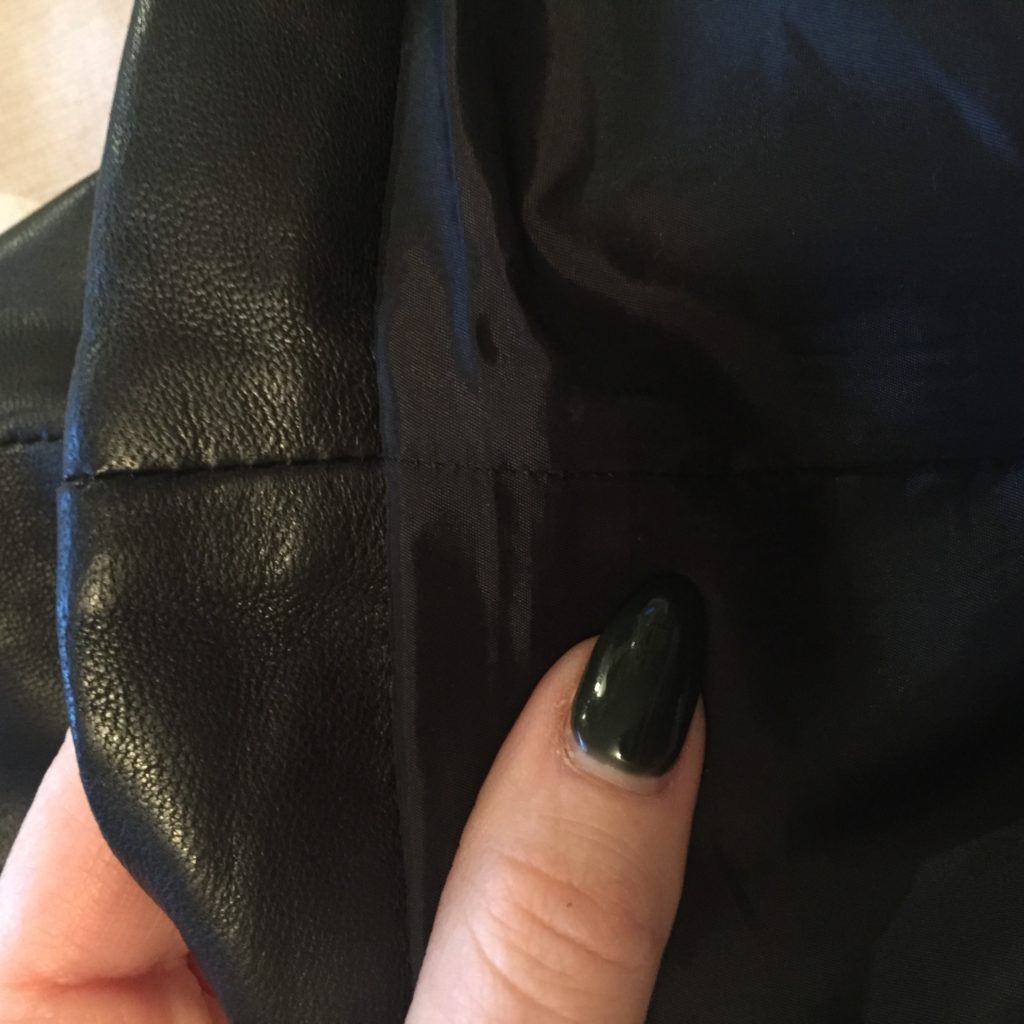
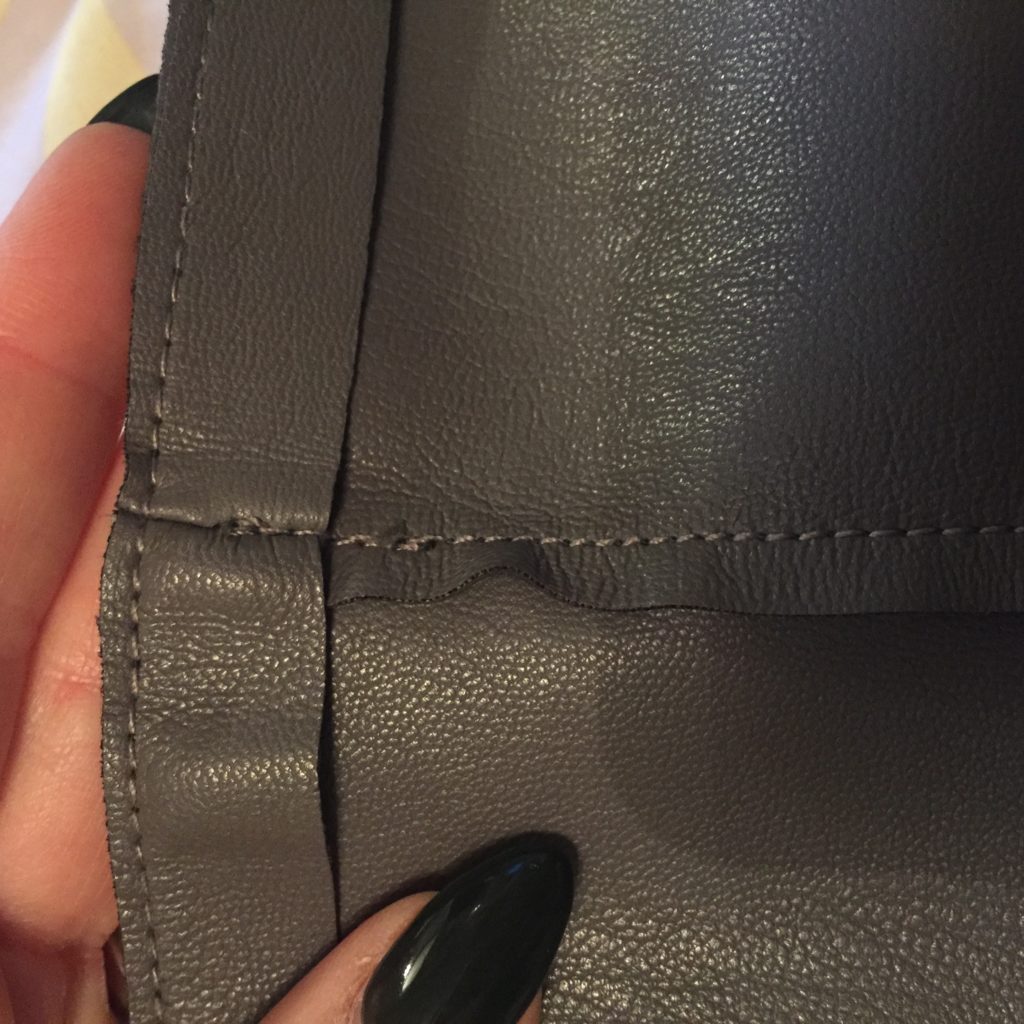
You can probably guess which one is which. The AllSaints skirt has a (polyester) lining and, again, its seams look neater and, well, more “finished”.
For dresses, I don’t have a lot of good comparisons but let’s use a Marni dress (100% cotton, unlined, sleeveless) and a Rachel Rachel Roy dress (100% polyester, unlined, sleeves). Can you tell which is which?
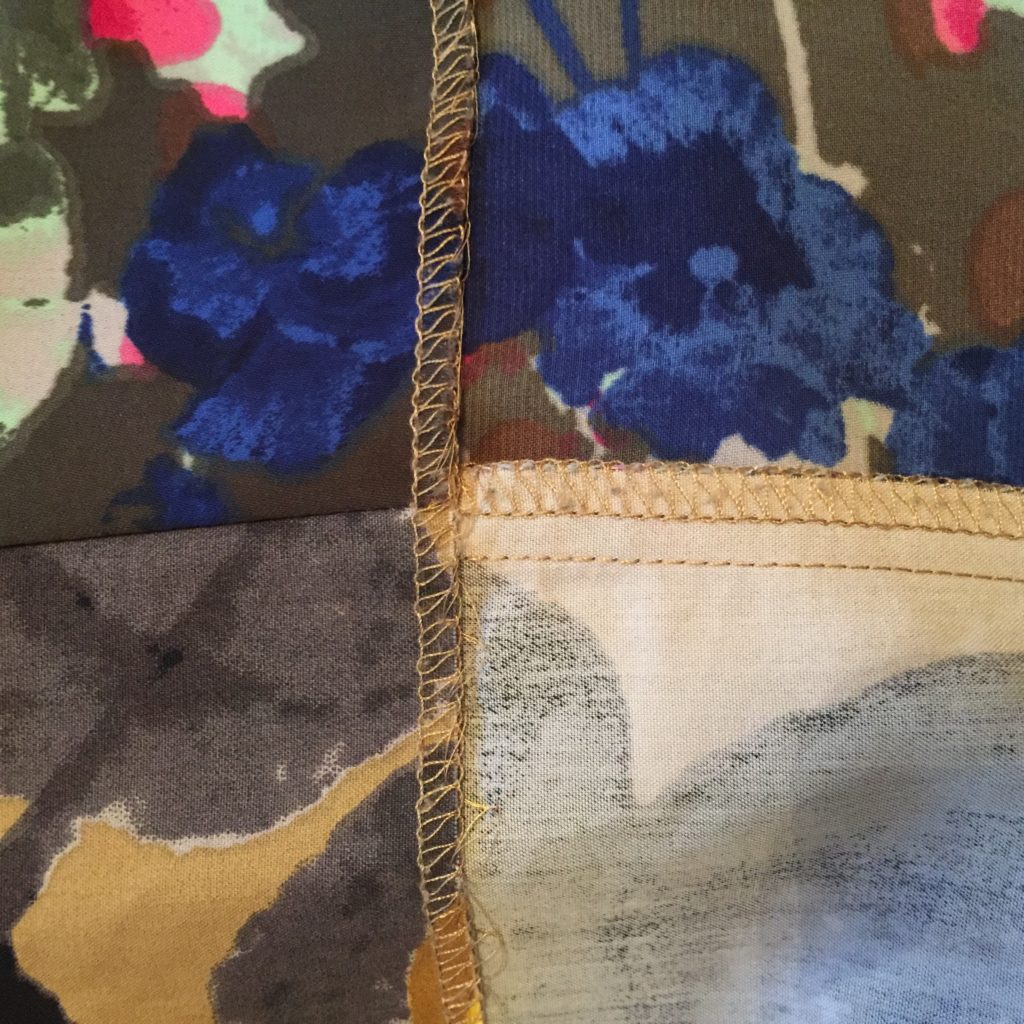
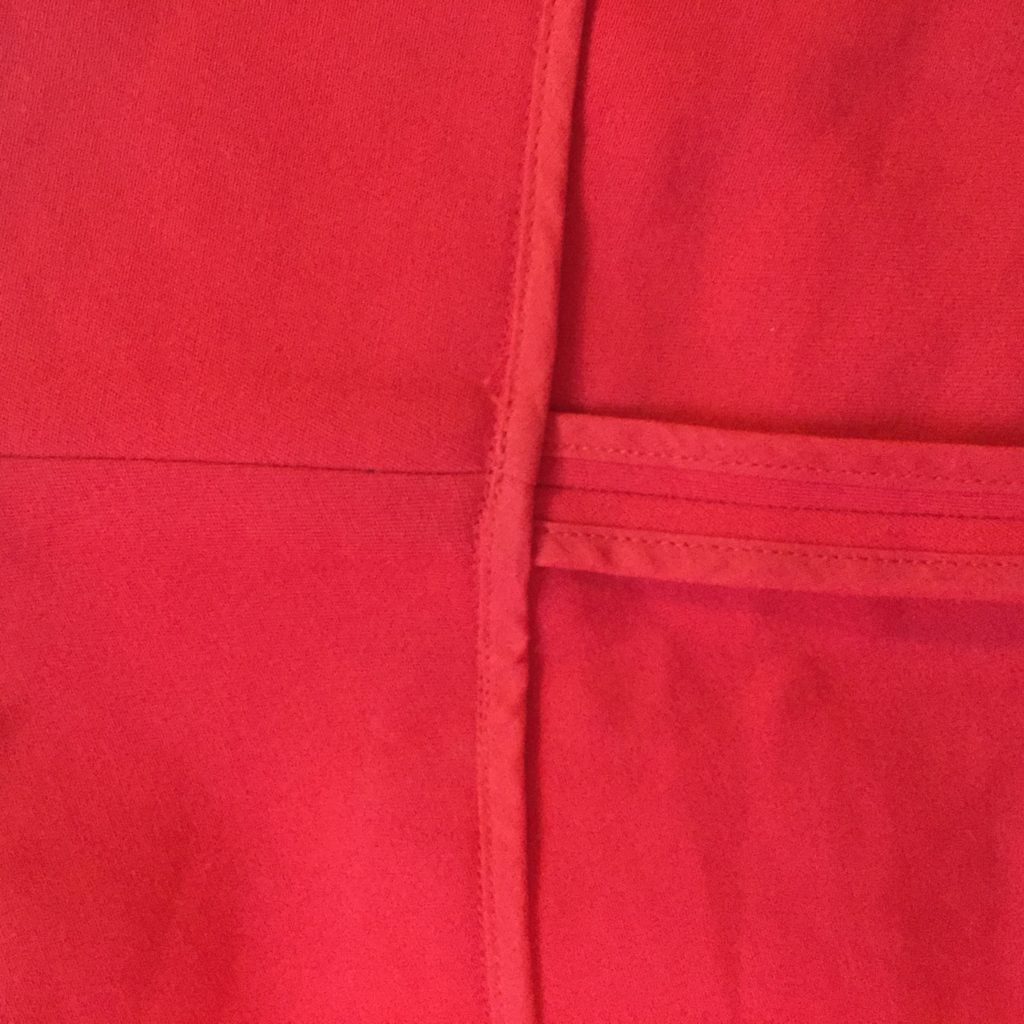
Again, it’s not hard to spot the difference. Even to a non-expert, the Marni seam and hem (second photo) looks cleaner and sturdier. It would take a lot of abuse for that hem to fall out.
Now, even when garments are finished in similar ways, some can still be better than others. Let’s look at a silk dress from a higher end Anthro brand; keep in mind this would have retailed for over $300. It’s a simple, unlined tunic.
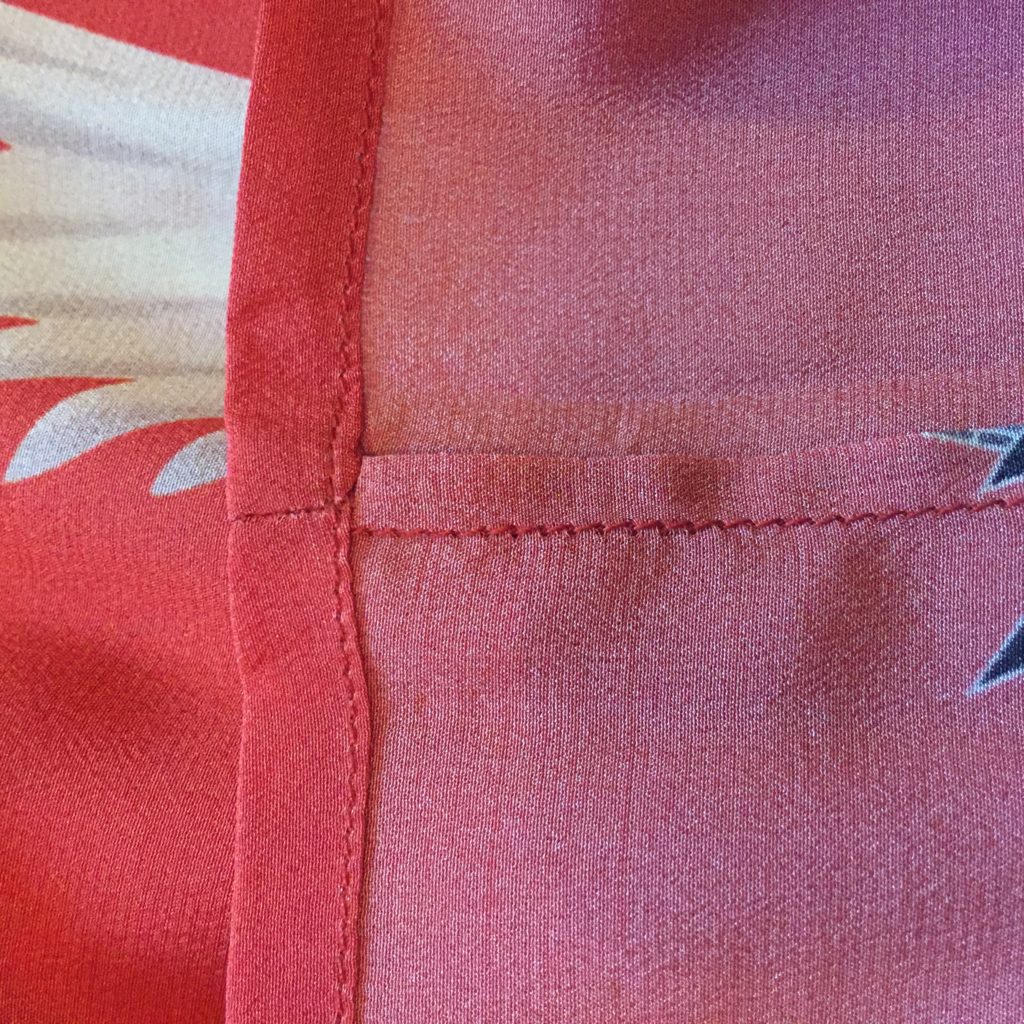
Not a huge seam allowance (compare to the Suno skirt above – I am referring to the extra “flap” of material at the seam) but all the stitching is nice and neat. The silk fabric is a bit thin and not fully opaque).
Now let’s look at this Zero+Maria Cornejo dress. Also silk, also unlined. Because it’s cut on an angle, here are 2 photos to capture all the seams and hem:
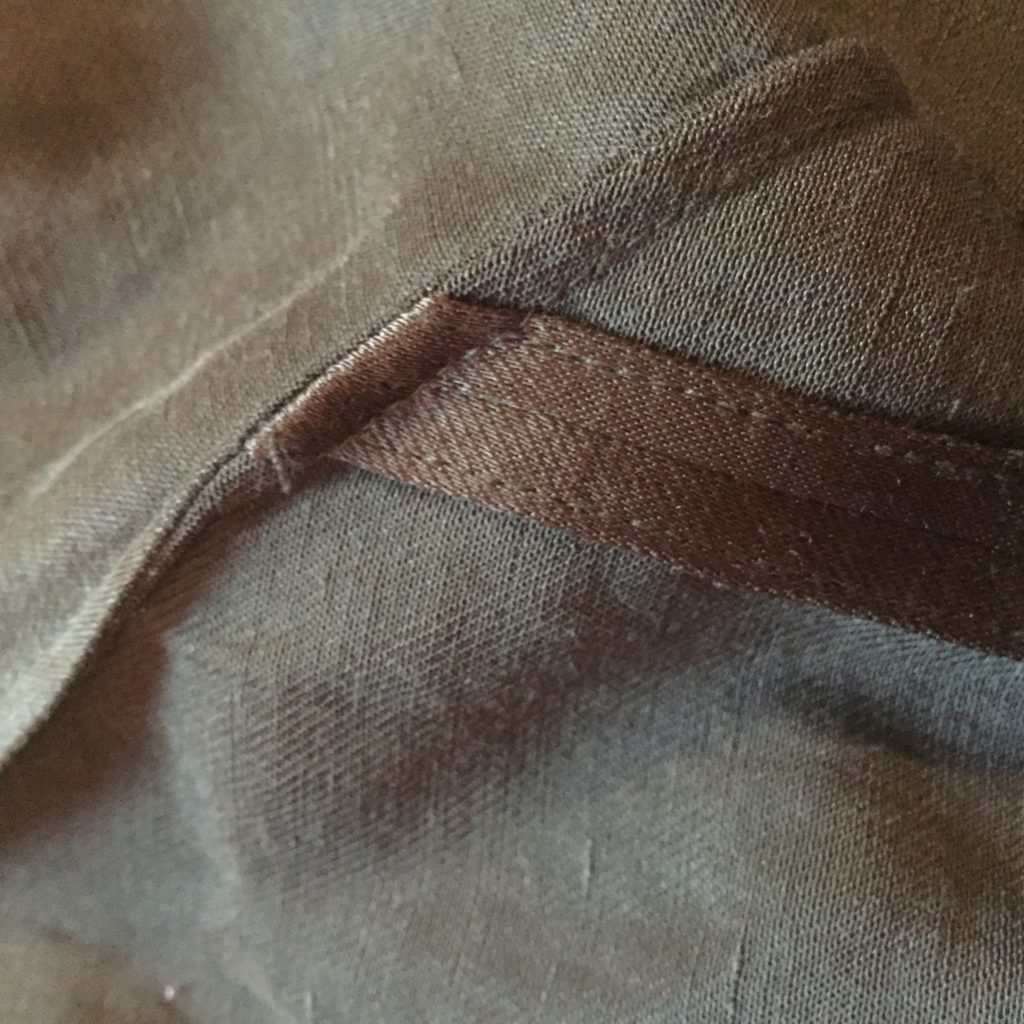
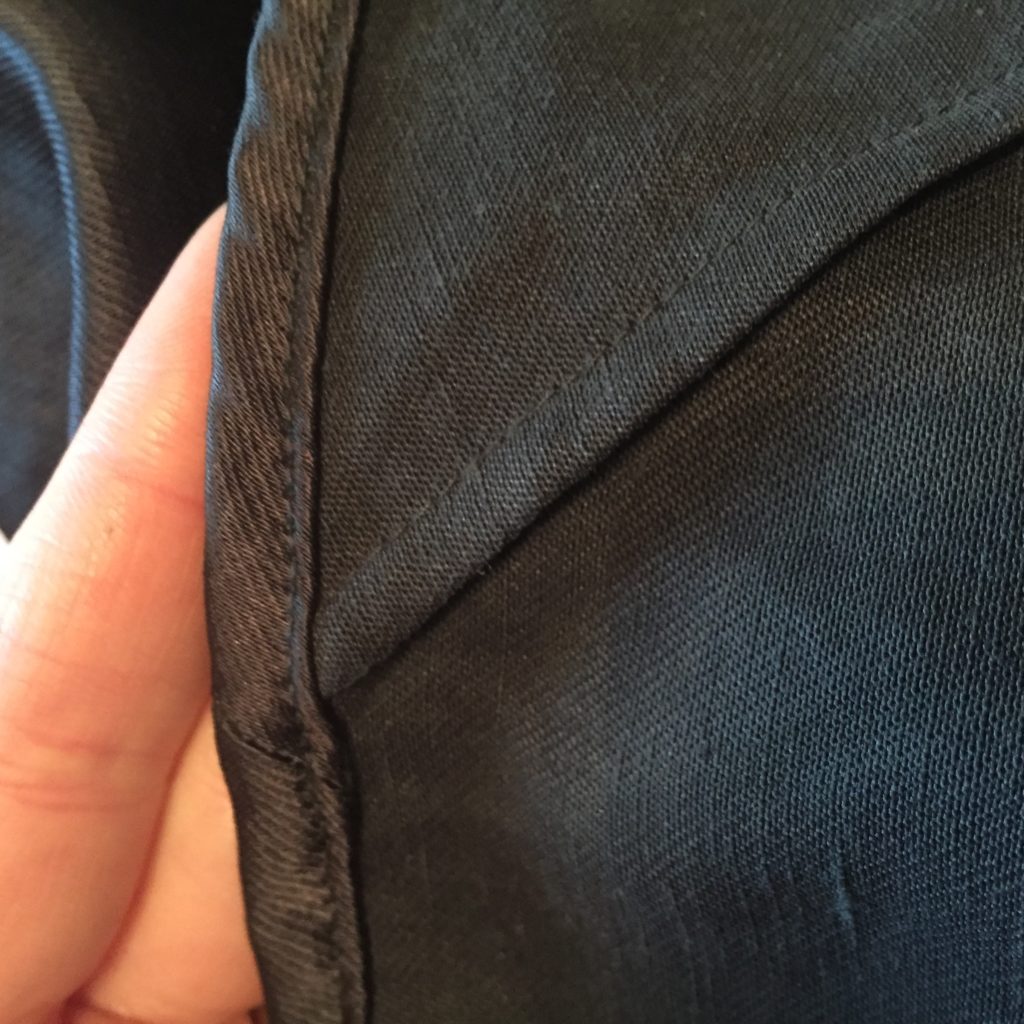
First of all, the material is way nicer – thicker, luscious silk. The hem is similar, but check out that inside seam – lots of reinforcement there.
The last thing I want to mention is that the quality of vintage “fast fashion” clothing (I am talking about stuff from the 90s here which, yes, qualifies – did I just blow your mind, fellow Gen Xer?) is often better than equivalent contemporary brands. Note that I said “often”; always have a look to confirm, but don’t immediately discount these pieces.
Here is a look at this vintage Ralph Lauren skirt:
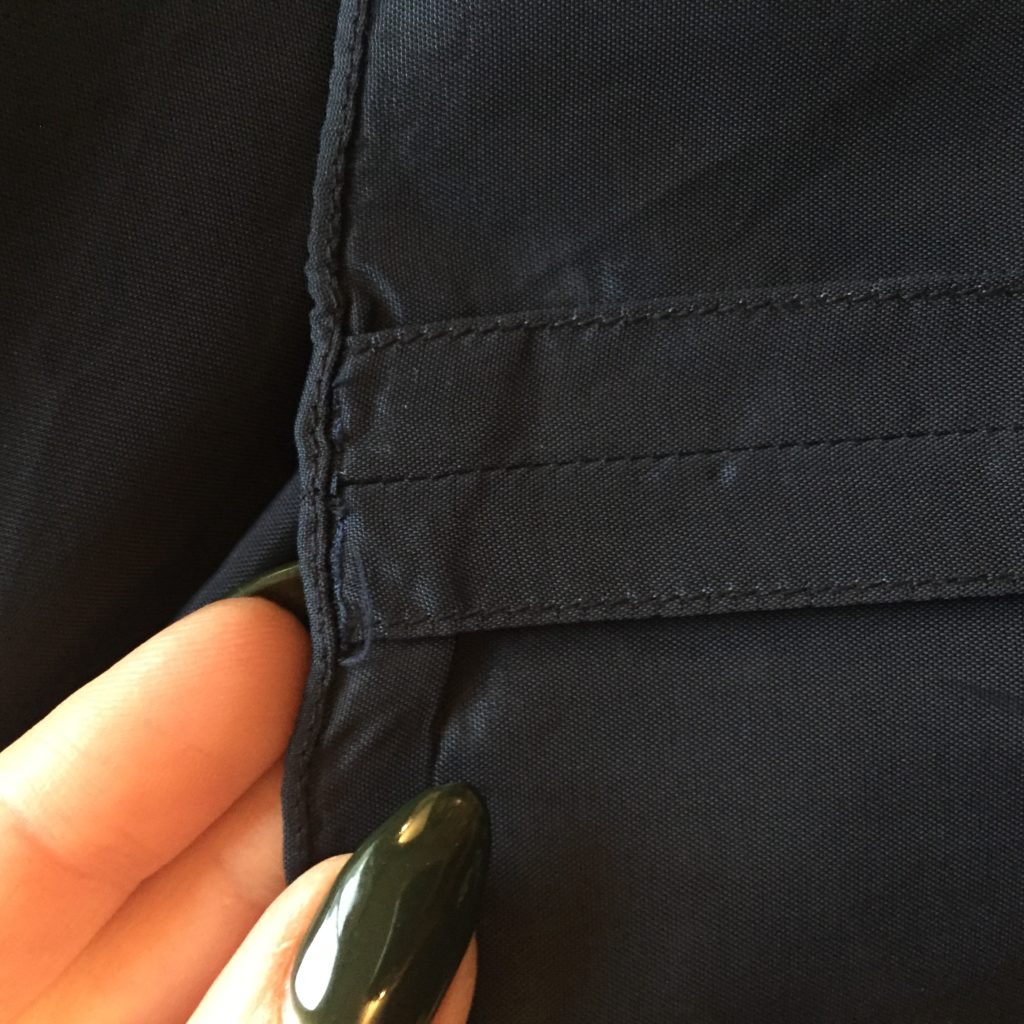
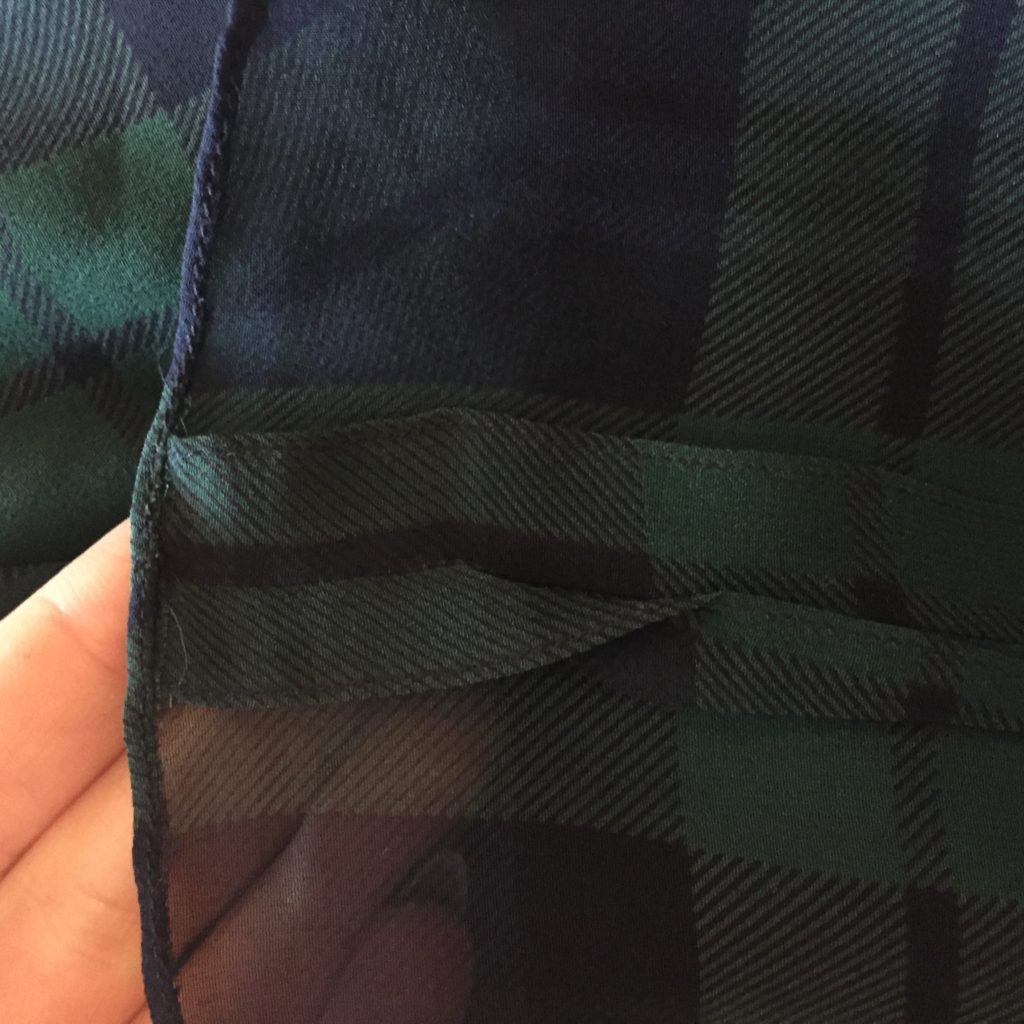
There have been a plethora of RL labels over the years, but as best as I can tell, this was not one of the premium collections – more like the stuff you would find at The Bay nowadays. The skirt and the lining are both 100% silk, and they didn’t scrimp on the fabric (there is enough here for a parachute). Again, both skirt and lining have nice, sturdy seams and hems – which is a bonus, because I’ve tripped on this skirt more than once. No rips so far, knock on wood.
I hope you have found my visual guide helpful, and if you have tips to share, please let us all know in the comments.

This was tremendously informative and helpful. I look out for lining and material feel but never checked seams. Thank you!
Glad it was useful! I’m not a sewist so I hesitated to write about this because I have no technical knowledge but I figured it might still be helpful for other newbies like me.
I really found this helpful! Thanks for putting it into words/visualization!
thanks! Pictures are so helpful, aren’t they? I’m always googling things and wishing people posted photos to help illustrate the information.
Wonderful article and pictures. You are so correct and I definitely will keep those details in mind when shopping in the future! Although some of the subtleties are not obvious in a new garment, after a few washings or even one washing it often becomes super obvious! Also I realized I had been using “skimp” interchangeably with “scrimp” and it’s not exactly the same, is it? I had to go look that up.
huh, I never really thought about scrimp and skimp. I’ll have to look it up too!
I’m not a regular thrifter, but this visual guide is fantastic and I intend use it whether shopping retail or thrift!
One of the other tips I’ve heard is to put your hand underneath the fabric and hold it u the light. If you can see your hand through it, your fabric is too thin.
That happens surprisingly often.
Good tips!
Oh yeah, I don’t doubt it. Quality fabrics are relatively rare, which is why it’s easy to spot them at the thrift store.
I had heard so much that you can tell garment quality by the seams, but I had no idea what to look for. Thanks for coming up with such compelling examples — they will stick in my brain!
Once you start checking these details on all the clothing you look at, you’ll quickly come to recognize what’s good and what’s not so good.
I love this! Thanks for the pictures. I am not great at sewing, but I know the basics and agree that just looking at the seams is really telling.
Another “tell” is whether plaids or patterns match up at seams, or are just haphazardly sewed together.
I thrift a lot, and another thing I do frequently is look at the inside, side-seam tag on brands like JCrew, Madewell, LOFT, Anthroplogie brands, etc. (so…not designer but nicer than fast fashion) and look for the season/year indicator. It will say something like SP 15 (Spring, 2015) or HOL 18. So then you know how contemporary the piece is. Of course, I often love pieces that are quite a bit older or that don’t have any date at all, but it’s sometimes a good indicator of whether the piece is a decent deal (My Value Village often overprices stuff like polyester blouses from 2012 because they happen to have J.Crew labels, and I stay away from that unless I absolutely adore the piece).
The pattern matching is a great tip, I can’t believe I forgot about it. Thanks for sharing!
Very helpful, especially with the photos of seam construction. Also I agree on the vintage fast fashion and blazer linings comments—I have a couple 90s Target and Gap gems, but also a couple blazers that always leave me overheated.
Glad to know I’m not the only one who swoons over quality seams. And a french seam? Love it!
Is that what the Suno one is called? I’ve heard that French seams are the best, but I don’t know what they’re supposed to look like.
Very helpful post, thanks so much!
Those are classic French seams – I learned how to do them at school! The fabric is first sewn “wrong side to wrong side”, the raw edges are trimmed, then it is turned inside-out and the final seam sewn. It is better quality because the raw edges are all trapped neatly inside.
They look so lovely but also time-consuming. This is why I could never be a sewist 😭
Thank you so much for this, Adina. So helpful, and I have shared it on my fashion forum site too.. It takes a lot of work to do posts like this, I know, but they are so helpful.
I ADORE french seams and beautiful finishing but they are so hard to find these days. Ironically, my best luck in thrifting has been to find them on hand-sewn items (I love these – people usually take such care with items they sew and knit for themselves.) I also have them on my Jason Wu and OdlR dresses, and – surprisingly – in an Ellen tracy silk blouse and culottes that I thrifted (you are so right about some of the 80s and 90s fast fashion brands having good quality.)
Anyway – thank you for a very instructive tutorial 🙂
You’re so welcome, and thank you for sharing!
Any item with wool content I hold up to a light to look for moth holes. You can scrunch fabric in your hand and then release it to see how easily it wrinkles. Are buttons sewn on tightly? Do buttons look cheap? Is there a spare button sewn into a seem?
Great tips!